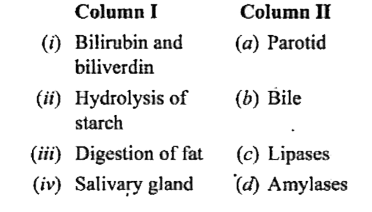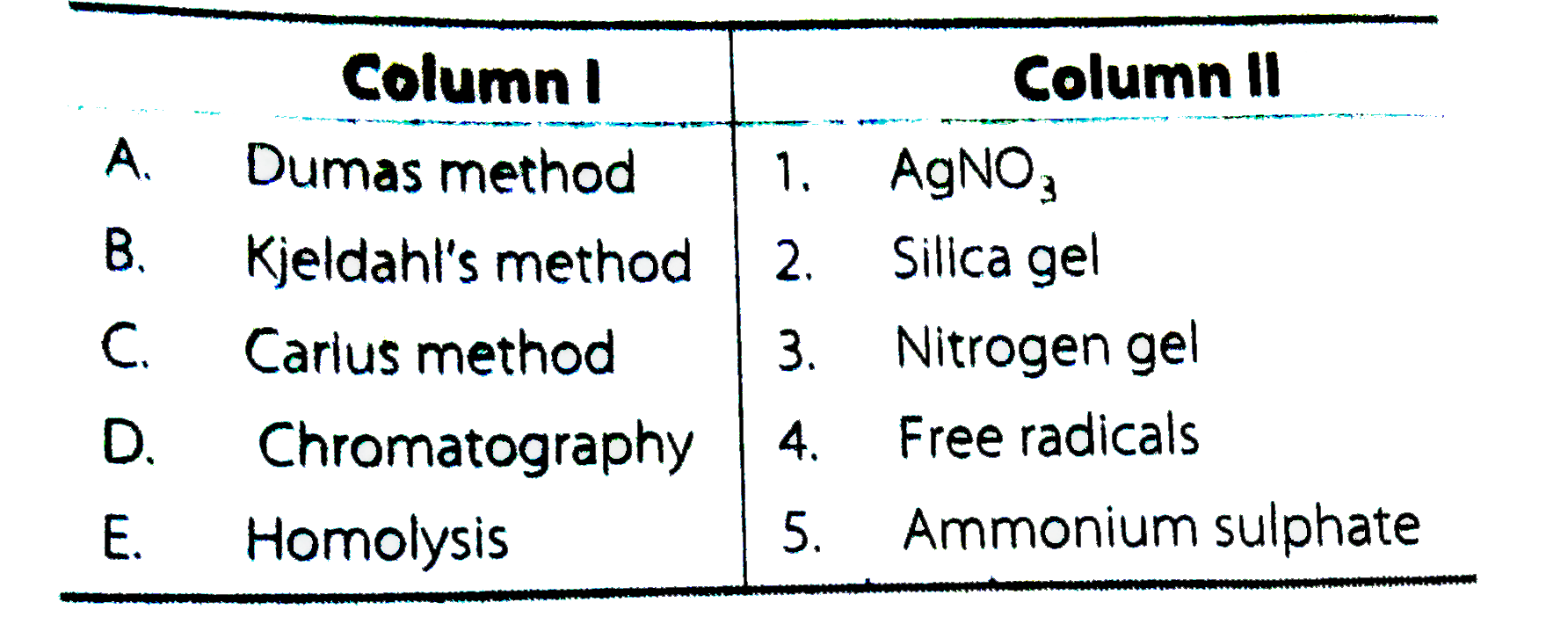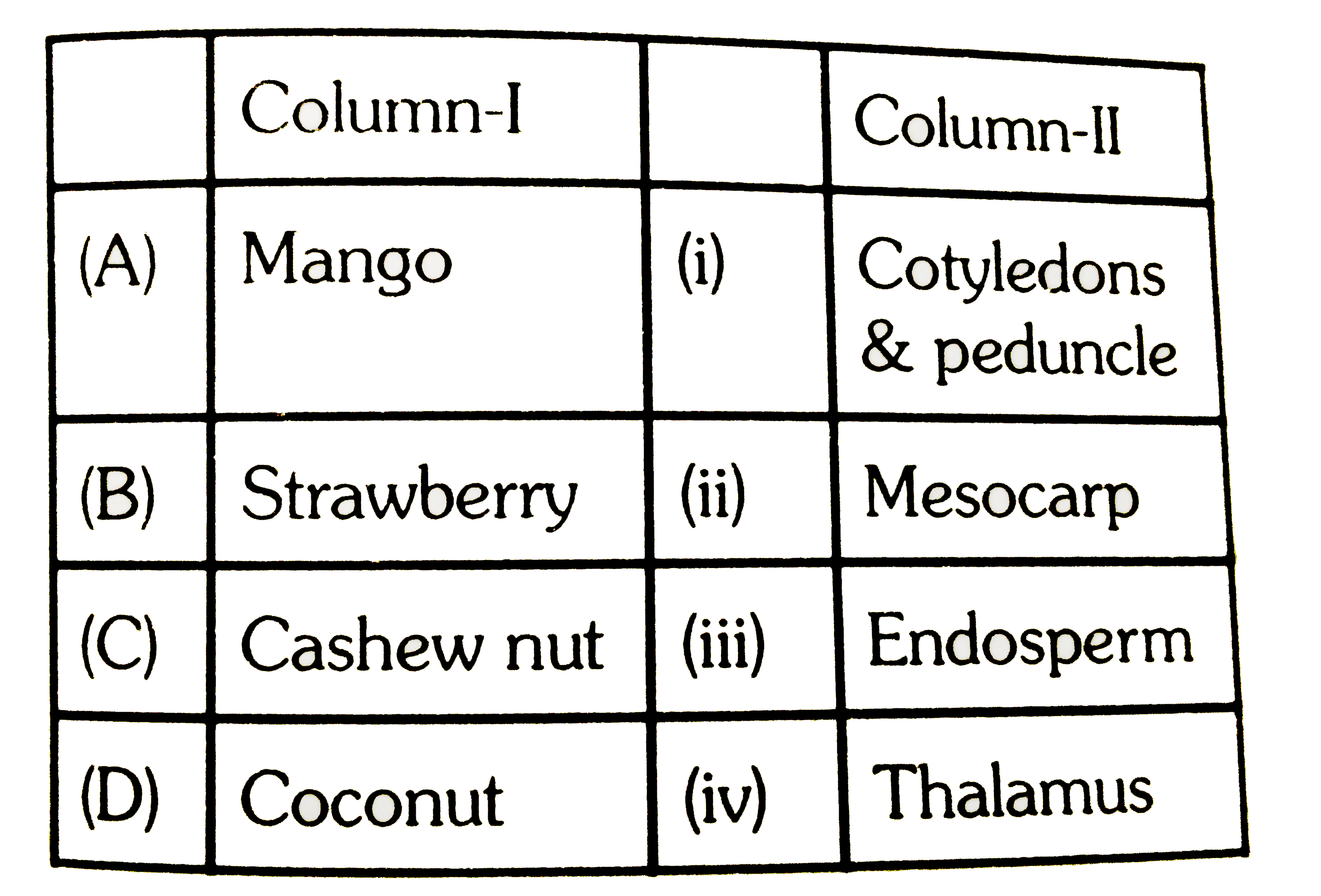Match the column I with column II
Column-IColumn-II(A)Starch(p)Natural polymer(B)Nylon-6(q)Synthetic polymer(C)Peptide Bond(r)Amide linkage(D)Maltose(s)Glycoside linkage(t)Oligosaccharide
The correct Answer is:A-p,s ; B-q,r ; C-r ; d-s,t
To solve the problem of matching Column I with Column II, let's analyze each item step by step:
1. Match Starch:
- Analysis: Starch is a carbohydrate that is composed of numerous glucose units. It is naturally occurring and is used by plants to store energy.
- Match: Starch corresponds to (p) "Natural polymer."
- Conclusion: A → p
2. Match Nylon-6:
- Analysis: Nylon-6 is a synthetic polymer made from the monomer caprolactam. It is not naturally occurring and is manufactured through chemical processes.
- Match: Nylon-6 corresponds to (q) "Synthetic polymer."
- Conclusion: B → q
3. Match Peptide Bond:
- Analysis: A peptide bond is formed between the carboxyl group of one amino acid and the amine group of another, resulting in an amide linkage. This bond is crucial in forming proteins.
- Match: Peptide bond corresponds to (r) "Amide linkage."
- Conclusion: C → r
4. Match Maltose:
- Analysis: Maltose is a disaccharide, which means it is composed of two monosaccharide units (glucose units). It falls under the category of oligosaccharides, which are carbohydrates made up of a small number of sugar units.
- Match: Maltose corresponds to (t) "Oligosaccharide."
- Conclusion: D → t
Final Matches:
- A → p (Starch → Natural polymer)
- B → q (Nylon-6 → Synthetic polymer)
- C → r (Peptide Bond → Amide linkage)
- D → t (Maltose → Oligosaccharide)
Summary of Matches:
- (A) Starch → (p) Natural polymer
- (B) Nylon-6 → (q) Synthetic polymer
- (C) Peptide Bond → (r) Amide linkage
- (D) Maltose → (t) Oligosaccharide
---
- Analysis: Starch is a carbohydrate that is composed of numerous glucose units. It is naturally occurring and is used by plants to store energy.
- Match: Starch corresponds to (p) "Natural polymer."
- Conclusion: A → p
- Analysis: Nylon-6 is a synthetic polymer made from the monomer caprolactam. It is not naturally occurring and is manufactured through chemical processes.
- Match: Nylon-6 corresponds to (q) "Synthetic polymer."
- Conclusion: B → q
- Analysis: A peptide bond is formed between the carboxyl group of one amino acid and the amine group of another, resulting in an amide linkage. This bond is crucial in forming proteins.
- Match: Peptide bond corresponds to (r) "Amide linkage."
- Conclusion: C → r
- Analysis: Maltose is a disaccharide, which means it is composed of two monosaccharide units (glucose units). It falls under the category of oligosaccharides, which are carbohydrates made up of a small number of sugar units.
- Match: Maltose corresponds to (t) "Oligosaccharide."
- Conclusion: D → t
- A → p (Starch → Natural polymer)
- B → q (Nylon-6 → Synthetic polymer)
- C → r (Peptide Bond → Amide linkage)
- D → t (Maltose → Oligosaccharide)
- (A) Starch → (p) Natural polymer
- (B) Nylon-6 → (q) Synthetic polymer
- (C) Peptide Bond → (r) Amide linkage
- (D) Maltose → (t) Oligosaccharide
Topper's Solved these Questions
Similar Questions
Match the column I w.r.t column II

View SolutionMatch the column I and column II.

View SolutionMatch column I with column II:

View SolutionMatch Column I with column II

View SolutionMatch the column I and with Column II

View SolutionMatch the column-I to column-II:-

View SolutionMatch the column-I to column-II :-

View SolutionMatch the column-I to column-II :-

View SolutionMatch the column-I to column-II :-

View SolutionMatch the column-I to column-II:-

View Solution
